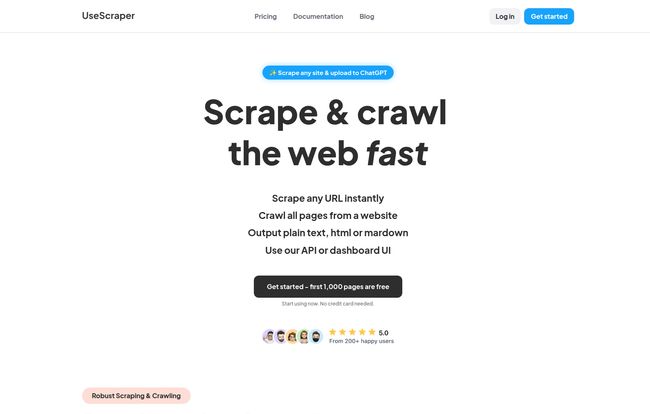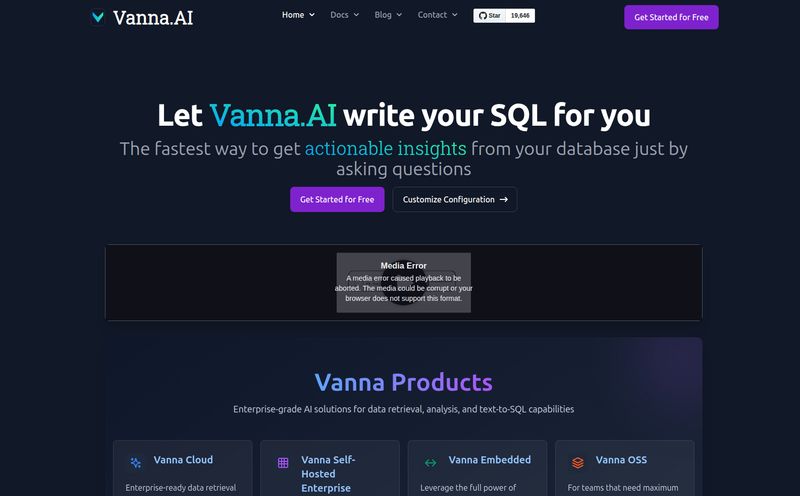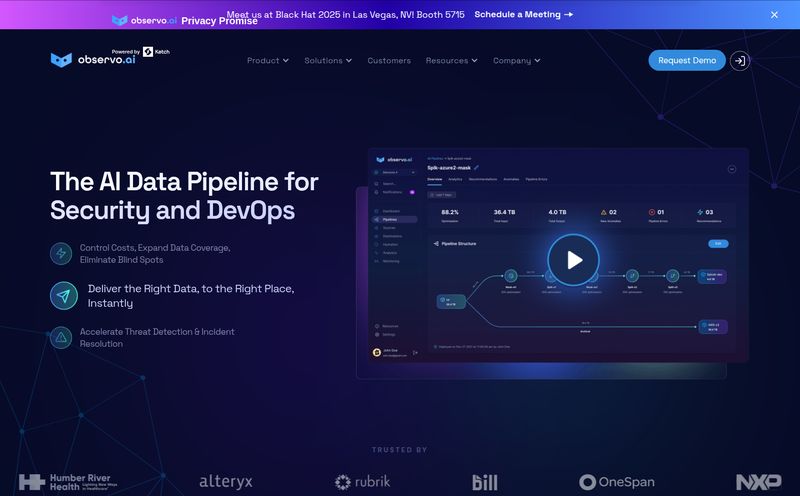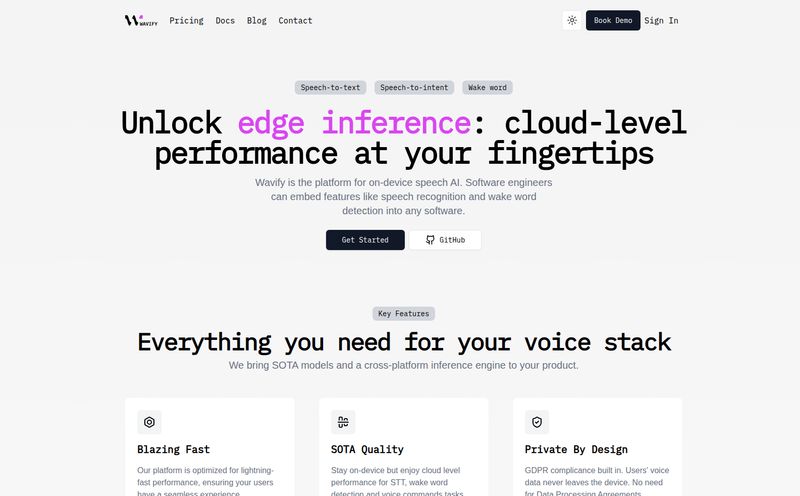For years, I’ve been neck-deep in the world of SEO and traffic generation, and if there’s one constant, it’s the need for good, clean data. We used to scrape competitor sites for keywords, backlinks, site structure... you know the drill. It was messy, often involved janky custom scripts, and you always felt like you were one wrong move away from getting your IP address put on a naughty list.
But things have gotten... weirder. And more exciting. Now, it's not just about SEO. The entire tech world has been swept up in the AI tidal wave. Everyone and their dog is building a chatbot, a RAG (Retrieval-Augmented Generation) system, or some other LLM-powered gizmo. And what’s the one thing all these hungry little AI brains need? Data. Tons of it. Fresh from the web.
So the old problem of web scraping is back, but with much higher stakes. Garbage in, garbage out has never been truer. You can't feed a sophisticated AI a jumble of HTML tags and JavaScript errors and expect it to sound like Shakespeare. This is the exact headache I was nursing when I stumbled across a tool called UseScraper. And honestly, it’s been a bit of a revelation.
So What Exactly Is UseScraper?
In short, UseScraper is a web crawling and scraping API. That’s it. No clunky desktop software to install, no browser extensions with a million confusing settings. It’s an API. You send it a URL, and it sends you back the content. Simple. Elegant.
But the devil, as they say, is in the details. It’s built for speed and, more importantly, for the specific needs of modern AI applications. It's not just grabbing the raw HTML and calling it a day. It’s designed to be the middleman between the chaotic, messy web and your pristine, data-hungry AI model. Think of it less like a brute-force home invader and more like a polite, incredibly efficient librarian who fetches exactly what you need, neatly organized and ready to read.
The Standout Features That Genuinely Impressed Me
I’ve seen a lot of scraping tools. Most are either too simple to be useful or so complex you need a PhD to operate them. UseScraper hits a sweet spot, focusing on a few things and doing them exceptionally well.
It Renders JavaScript, Which Is No Longer Optional
Back in the day, you could get away with grabbing the raw HTML of a page. Not anymore. So many websites today are built on frameworks like React, Vue, or Angular. They're basically applications that run in your browser. If your scraper can't render JavaScript, it's like trying to read a pop-up book without opening the flaps – you’re just seeing a blank page with a “Loading...” spinner. UseScraper uses a real Chrome browser on the backend to render the page fully before it scrapes. This means you get the content you actually see, not the empty shell that loads first. For modern web analysis, this isn't a feature; it's a requirement.
Clean Markdown Output Is an AI Game-Changer
This. This is the part that made me sit up and pay attention. You can get the data as raw HTML or plain text, sure. But the real magic is the Markdown output. Why is that so cool? Because Large Language Models like ChatGPT think in terms of structured text. Feeding them raw HTML is like making them read a dictionary that’s been put through a blender.
Markdown, on the other hand, is clean. It preserves headings, lists, links, and text formatting without all the noisy `

Visit UseScraper
It Handles the Proxy Scramble For You
Anyone who's done any serious scraping has run into the dreaded 429 “Too Many Requests” error or, worse, a full IP ban. It’s a constant cat-and-mouse game. Websites don’t particularly like being scraped en masse, so they block IPs that send too many requests too quickly. The standard solution is to use a pool of proxy servers and rotate through them.
Setting that up yourself is a pain. Trust me. You have to source the proxies, manage the rotation logic, handle failed requests, etc. UseScraper just... does it for you. The auto-rotating proxies mean you can crawl entire sites without constantly looking over your shoulder. It’s one of those “set it and forget it” features that lets you focus on the data, not the plumbing.
The All-Important Question: What's the Price?
Pricing is always where the rubber meets the road. I actually quite like UseScraper's model. It's straightforward and scales logically.
Here’s a quick breakdown:
| Plan | Cost | Key Features |
|---|---|---|
| Pay as you go | $0 /mo + usage costs ($1 per 1,000 pages) | 10 concurrent jobs, Crawl up to 10,000 pages per site, JavaScript rendering. Plus, the first 1,000 pages are free. |
| Pro | $99 /mo + usage costs ($1 per 1,000 pages) | All free features, plus: Unlimited concurrent jobs, unlimited pages, advanced proxies, and priority support. |
My Take on the Pricing Model
The Pay as you go plan is fantastic. It’s a genuinely free tier to get started, not a timed trial. The fact that the first 1,000 pages are free means you can properly kick the tires and see if it works for your project without pulling out a credit card. It’s perfect for small projects, experiments, or developers just getting their feet wet.
The Pro plan is for when you get serious. If you’re building a commercial application or doing massive, site-wide crawls for data analysis, the $99/month for unlimited concurrent jobs and pages is a no-brainer. The priority support is also a nice security blanket to have.
One word of caution on the pay-as-you-go model: keep an eye on your usage! Crawling can consume credits faster than you think, especially on large sites. It's a fair model, but you need to be mindful.
The Good, The Bad, and The Honest Truth
No tool is perfect, right? I love the speed and the AI-focused output. It’s incredibly efficient. The API-first approach is exactly what a developer wants. But, the pay-as-you-go pricing, while great for starting, could get spicy if you're scraping millions of pages and aren't on the Pro plan. You just have to do the math for your specific use case. Also, some of the really powerful features, like the most advanced proxies, are reserved for the Pro tier, which is pretty standard practice but worth noting.
So, Should You Use UseScraper?
It depends on who you are.
- For AI Developers building with LLMs/RAG: Absolutely. The Markdown output alone makes this one of the best tools I've seen for this specific purpose. It will save you hours of data cleaning.
- For SEOs and Data Analysts: If you're comfortable with APIs and need to pull structured content from thousands of pages for competitor analysis or content audits, this is a seriously powerful tool.
- For a Total Beginner: Maybe not. If you're looking for a simple point-and-click interface to grab a few prices from a webpage, this might be overkill. This is a developer's tool at its heart.
In the end, UseScraper feels like a professional-grade tool built for a very modern problem. It’s not trying to be everything to everyone. It’s a scalpel, designed for the precise surgery of extracting clean, usable data from the web to feed the next generation of applications. And in my book, that focus is its greatest strength.
Frequently Asked Questions
What is UseScraper in simple terms?
UseScraper is an API that lets you automatically pull content from any website. You give it a link, and it gives you back the page's content in a clean format like Markdown, plain text, or HTML, which is great for feeding into AI systems.
Can UseScraper handle modern, JavaScript-heavy websites?
Yes, it can. It uses a real Chrome browser to fully load and render pages, so it can scrape content from complex, interactive sites (like those built with React or Vue) that other scrapers might miss.
What's special about the Markdown output format?
Markdown is a lightweight format that keeps the structure of the text (headings, lists, etc.) but removes all the messy HTML code. This makes the data much cleaner and easier for AI models like ChatGPT to understand and process.
Is UseScraper free to try?
Yes. It has a 'Pay as you go' plan that is free to sign up for, and you get your first 1,000 page scrapes for free. You only start paying for what you use after that, so you can test it thoroughly.
How does UseScraper prevent getting blocked by websites?
It uses a system of auto-rotating proxies. This means it routes its requests through many different IP addresses, so it's much harder for a website’s security system to detect and block the scraping activity.
What is the main difference between the Free and Pro plans?
The free 'Pay as you go' plan limits you to 10 concurrent jobs and crawling 10,000 pages per website. The $99/mo Pro plan removes these limits, offering unlimited concurrent jobs and pages, plus advanced proxies and priority customer support, making it suitable for large-scale operations.



